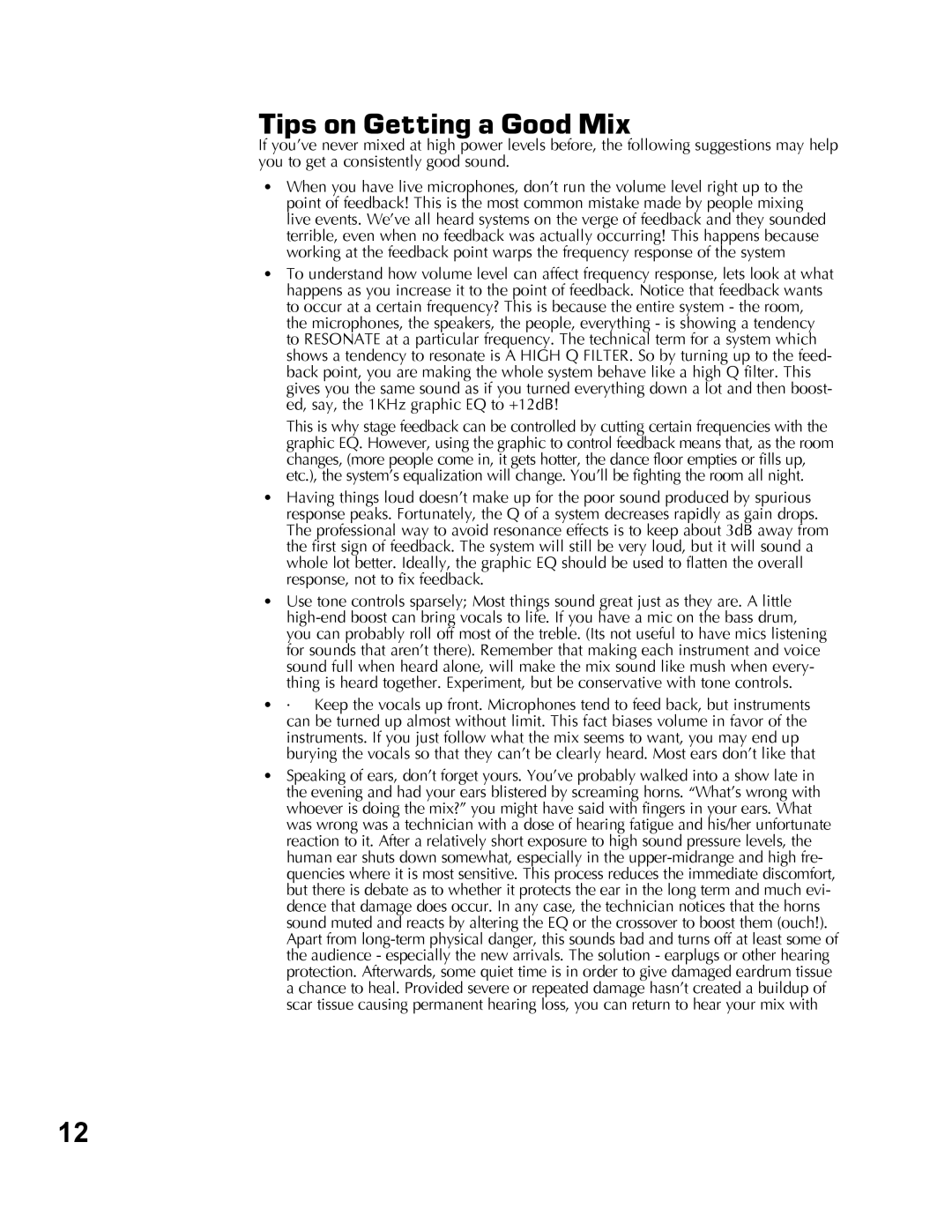Tips on Getting a Good Mix
If you’ve never mixed at high power levels before, the following suggestions may help you to get a consistently good sound.
•When you have live microphones, don’t run the volume level right up to the point of feedback! This is the most common mistake made by people mixing live events. We’ve all heard systems on the verge of feedback and they sounded terrible, even when no feedback was actually occurring! This happens because working at the feedback point warps the frequency response of the system
•To understand how volume level can affect frequency response, lets look at what happens as you increase it to the point of feedback. Notice that feedback wants to occur at a certain frequency? This is because the entire system - the room, the microphones, the speakers, the people, everything - is showing a tendency to RESONATE at a particular frequency. The technical term for a system which shows a tendency to resonate is A HIGH Q FILTER. So by turning up to the feed- back point, you are making the whole system behave like a high Q filter. This gives you the same sound as if you turned everything down a lot and then boost- ed, say, the 1KHz graphic EQ to +12dB!
This is why stage feedback can be controlled by cutting certain frequencies with the graphic EQ. However, using the graphic to control feedback means that, as the room changes, (more people come in, it gets hotter, the dance floor empties or fills up, etc.), the system’s equalization will change. You’ll be fighting the room all night.
•Having things loud doesn’t make up for the poor sound produced by spurious response peaks. Fortunately, the Q of a system decreases rapidly as gain drops. The professional way to avoid resonance effects is to keep about 3dB away from the first sign of feedback. The system will still be very loud, but it will sound a whole lot better. Ideally, the graphic EQ should be used to flatten the overall response, not to fix feedback.
•Use tone controls sparsely; Most things sound great just as they are. A little
•· Keep the vocals up front. Microphones tend to feed back, but instruments can be turned up almost without limit. This fact biases volume in favor of the instruments. If you just follow what the mix seems to want, you may end up burying the vocals so that they can’t be clearly heard. Most ears don’t like that
•Speaking of ears, don’t forget yours. You’ve probably walked into a show late in the evening and had your ears blistered by screaming horns. “What’s wrong with whoever is doing the mix?” you might have said with fingers in your ears. What was wrong was a technician with a dose of hearing fatigue and his/her unfortunate reaction to it. After a relatively short exposure to high sound pressure levels, the human ear shuts down somewhat, especially in the
12
